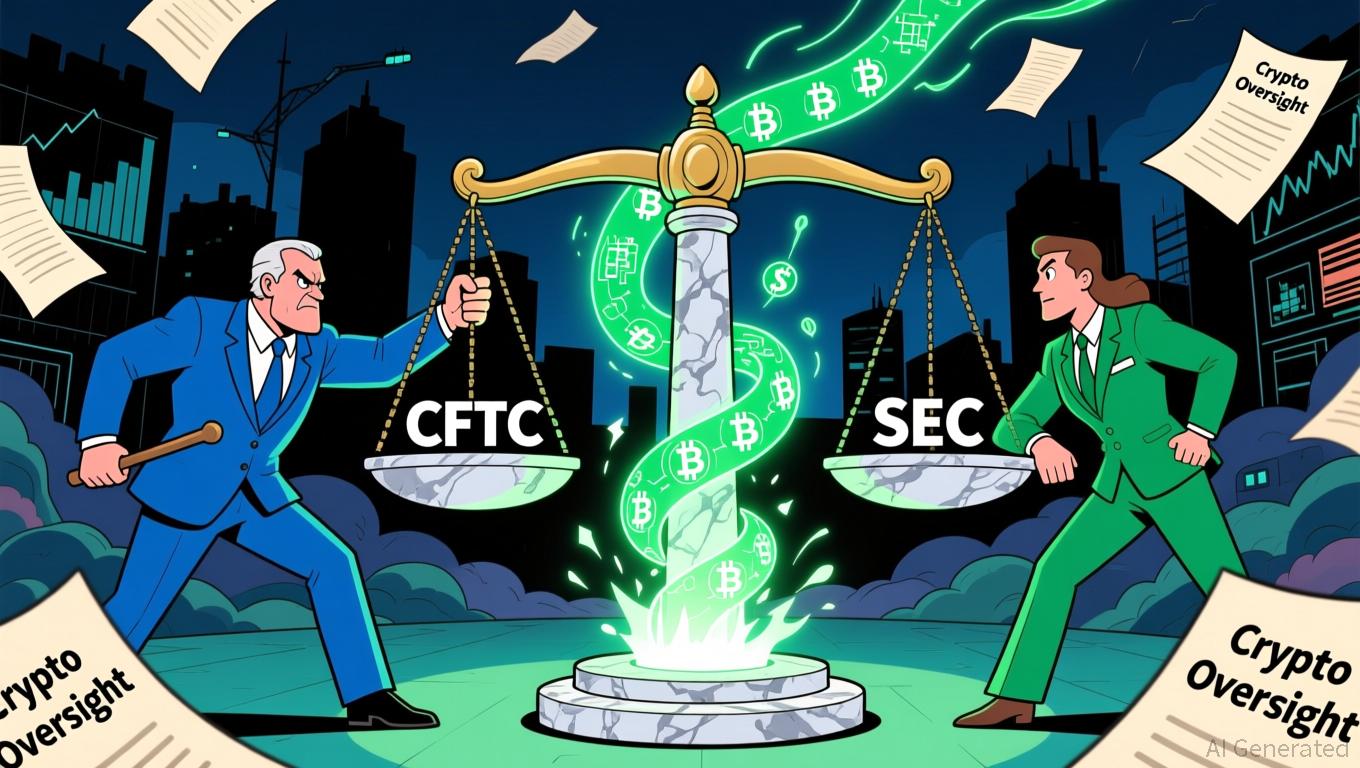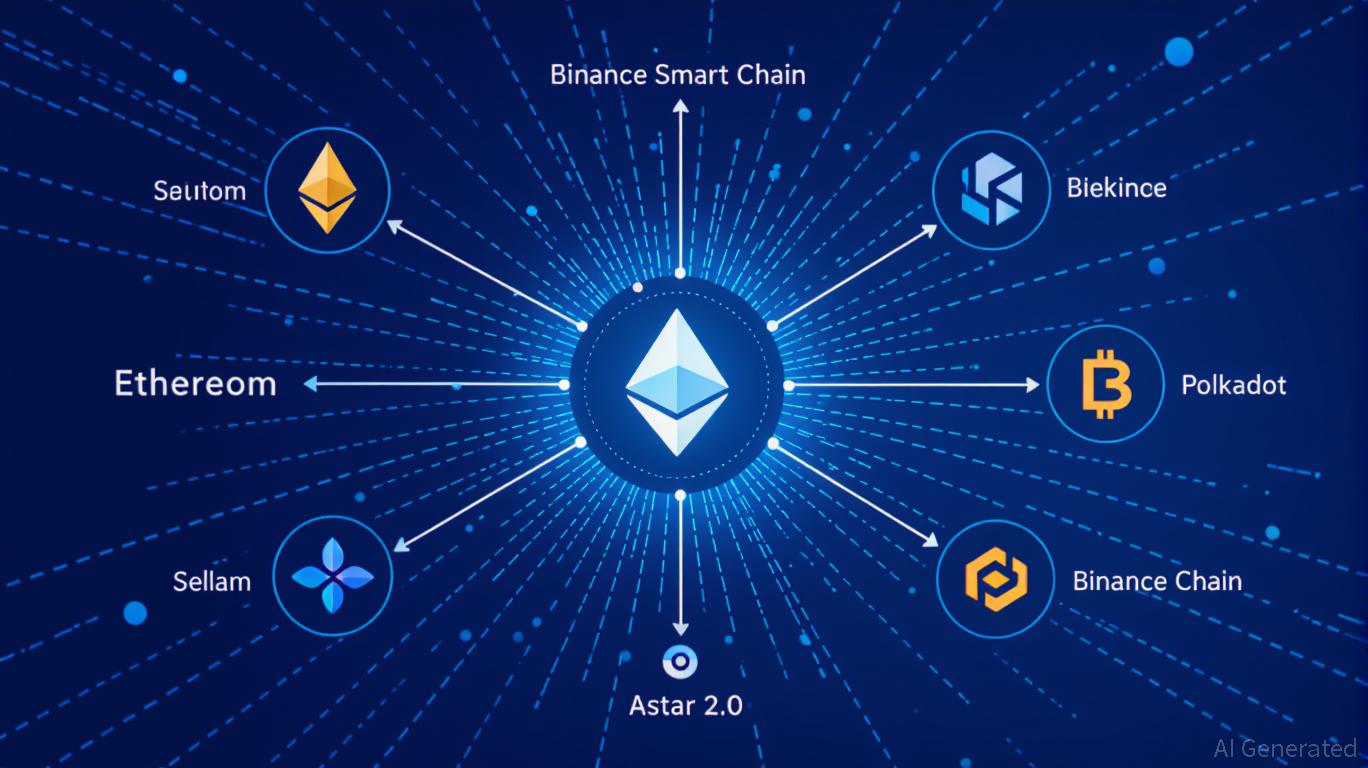China's Soybean Purchases Decline, U.S. Growers Confront Surplus and Rivalry from Brazil
- China's U.S. soybean import deal fails to restore farmer confidence as purchases remain below pre-trade-war levels amid South American competition. - A 13% U.S. tariff and Brazil's price advantage have shifted Chinese buyers toward cheaper South American cargoes, worsening Midwest farmers' oversupply crisis. - Record Chinese soybean stockpiles and weak buyer commitments highlight structural challenges, with Wisconsin facing negative profit margins in 2025. - Federal aid packages provide temporary relief
Although China and the U.S. recently reached a trade agreement to restart soybean imports, American farmers remain skeptical, as Chinese purchases are still well below what they were before the trade conflict and face tough competition from more affordable South American soybeans. According to the deal announced at the end of October, China
The agreement, reached during a period of heightened tensions between President Donald Trump and President Xi Jinping,
This shift has left American farmers like Scott Gaffner from Illinois uncertain about the future. Gaffner, whose family usually sells 40% of their soybeans to China,
Ongoing structural issues add to the trade worries.
Federal support programs, such as a $30 billion aid package for farmers,
While the trade pact sets a minimum for U.S. soybean exports, analysts warn that China's promises remain uncertain. "The annual target of 25 million tons
Disclaimer: The content of this article solely reflects the author's opinion and does not represent the platform in any capacity. This article is not intended to serve as a reference for making investment decisions.
You may also like
Bitcoin News Update: CFTC's Broader Role in Crypto Regulation Ignites Discussion on Clearer Rules
- U.S. lawmakers propose expanding CFTC's crypto oversight via a bill reclassifying spot trading, diverging from SEC's enforcement approach. - Harvard University invests $443M in BlackRock's IBIT ETF, reflecting institutional confidence in crypto as a legitimate asset class. - DeFi projects like Mutuum Finance raise $18.7M in presales, leveraging regulatory momentum and transparent on-chain credit systems. - RockToken's infrastructure-backed crypto contracts attract long-term investors with structured yiel

DASH Aster DEX's Latest On-Chain Growth and What It Means for DeFi Liquidity
- DASH Aster DEX leads 2025 DeFi shift with hybrid AMM-CEX model and multi-chain support (BNB, Ethereum , Solana), boosting TVL to $1.399B and Q3 daily trading volumes of $27.7B. - Platform's 1,650% ASTER token price surge post-TGE attracted 330,000 new wallets, with 94% of BSC-USD volume ($2B/day) driving institutional adoption via Binance/YZi partnerships. - ASTER token mechanics enable 80% margin trading, 5-7% staking rewards, and governance rights, while annual 5-7% fee burns create scarcity and align

Astar 2.0: Leading a New Generation of DeFi and Cross-Chain Advancements
- Astar 2.0 introduces a zkEVM mainnet and cross-chain interoperability, slashing gas fees and enabling 150,000 TPS with 2025 scalability goals. - Strategic partnerships with Mazda, Japan Airlines, and Sony demonstrate blockchain's real-world applications in logistics, loyalty programs, and digital asset tokenization. - Q3 2025 data shows $2.38M DeFi TVL growth and 20% active wallet increase, alongside a $3.16M institutional ASTR token acquisition. - The platform aims to solidify its role as a foundational

Aster DEX Introduces New On-Ramp: Transforming Retail Participation in DeFi
- Aster DEX integrates institutional-grade custody and privacy tech (zero-knowledge proofs) to bridge retail-institutional DeFi gaps via BNB Chain partnerships. - TVL surged to $2.18B by late 2025 through yield-bearing stablecoins and hidden orders, attracting both retail and institutional liquidity. - Despite compliance gaps and wash trading concerns, Aster's Binance alignment and Coinbase listing signals growing institutional validation.
